Inside Polygon Pictures with Kaina of the Great Snow Sea Executive Producer Hideki Moriya
by Andrew Osmond,In December 2022, I had the fortune to visit Polygon Pictures, the digital studio whose latest series, Kaina of the Great Snow Sea, recently began on Crunchyroll. Polygon's previous titles include Knights of Sidonia, based on a manga by Tsutomu Nihei, who also originated the world of Kaina. Other Polygon anime include Ajin; the Studio Ghibli-produced Ronja, The Robber's Daughter; and such franchise tie-ins as Tron: Uprising and Pacific Rim: The Black.
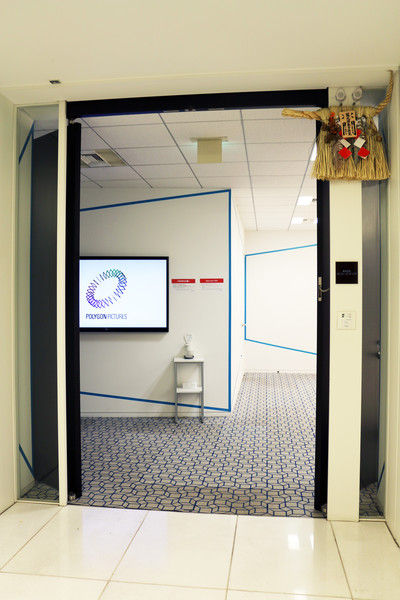
The obvious thing that strikes you when you enter the Polygon building is how much of it is open space. This is not a cramped workplace; around four-fifths of the studio's staff work remotely from home on any given day. Polygon was already looking into the potential of remote work before the Covid outbreak. When the pandemic hit, it was one of the first anime studios to lock down and switch over to remote work.
Today, a good half of the building is an open area where you can plug in a laptop. The space is also used for seminar events with guest speakers and Halloween and year-end parties. A smaller recreation area used to resemble a manga café, with people sitting and browsing. Now, though, it's designed to encourage communication – there's a ping-pong table and a dartboard.
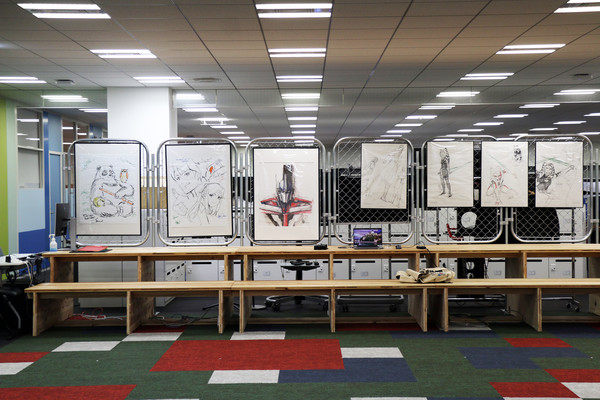
Away from the open space, there still are the demarcated work areas that you'd expect, though on a much more modest scale than pre-Covid. Many anime studios don't divide artists by departments, but Polygon follows a style closer to Western studios. Another way in which Polygon is unusual is that a little under a fifth of the studio's staff are non-Japanese. To smooth communication for both them and the studio's foreign clients, Polygon has a ten-strong team of translators and interpreters.
The studio has about thirty projects in some stage of development at any time, including some using new technologies and techniques. The projects for international clients tend to be in full 3DCG, but Polygon's other works often mix 3DCG with some 2D backgrounds—that's the case with Kaina.
Elsewhere among the work areas, there are CG artists animating faces with a vast number of controls, or revving up the line art, making the lines on a character thicker or thinner as the shot demands.
Some workstations have canopies above the screens – these are for lighting artists who need accurate grades of light to adjust colors. And then there's the "edit room," the chance to brush up what's been created a bit, with a standard television on the back wall—that's to judge how the animation will actually look in people's homes.
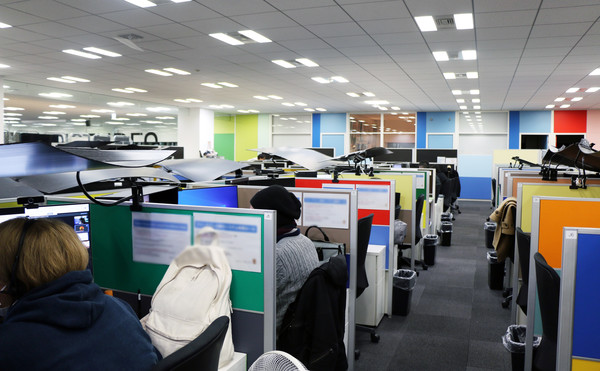
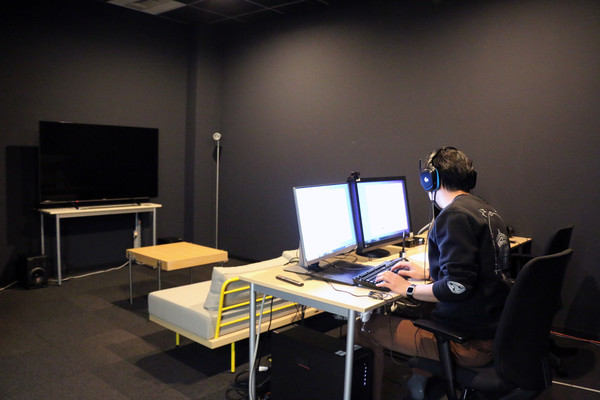
After the tour, I spoke to Polygon's Hideki Moriya, an Executive Producer of Polygon's current series, Kaina of the Great Snow Sea. Like several of Polygon's earlier titles, the anime depicts humans struggling to survive in a very dangerous far future. I asked Moriya if he thought this kind of scenario was especially well-suited to animation.
"I think that CG animation lends itself well to SF, like robots, futuristic stuff," Moriya says. "At the same time, the story of overcoming a struggle is a very prominent type of story that you see in a lot of projects. So if you combine science-fiction with that, you get what you just mentioned. I also produced Levius and Ajin; I personally like these types of action science-fiction, not daily life stories. So that's why we've done that here."
The concept of Kaina is credited to Tsutomu Nihei. "We started planning this out in 2014," Moriya says. "That summer was when Season 1 of Knights of Sidonia finished airing." That was Polygon's first collaboration with Nihei; Moriya wanted to try something new with him. "I was at his home," he recalls," and we were talking about trying something that was not science-fiction in particular, maybe something more fantastical, with a huge world."
Nihei immediately came back to Polygon with an idea; he first showed them an image of a world and a person walking on top of the atmosphere. "There's actually a layer engulfing the planet that you can walk on," Moriya explains. "It's a thick transparent film [called a “canopy” in the official translation]. That was the first concept that created the story."
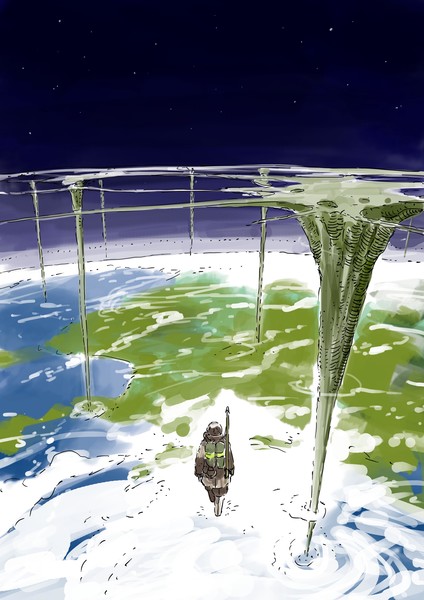
However, Kaina developed slowly, as there were so many other projects that Polygon and Nihei had to deal with. "After Season 1 of Knights of Sidonia came out," Moriya says, "we did Season 2; then the movie BLAME!, and then the Knights of Sidonia movie to complete the trilogy. We were having meetings about Kaina between those projects, but then the next project came in, and we would stop the Kaina meetings and do the new project. Then in 2018, Nihei finally came to us with an outline for the story, and we pitched that to Fuji TV, and they were good with it and gave us the financial backing to go ahead."
Does it make a difference if a project is conceived over a long time? "One thing that I can say is that for the other projects we've done, like Sidonia and BLAME!, there was already a manga. We already had the world, the idea, in terms of the concepts and the character designs; we just had to create it. It was very easy to speed through that. But for Kaina, because we were doing everything from scratch, we had to spend a lot of time with the character designs, for example. The designs of the homes and the buildings, what types of materials would be used, and what types of food culture the characters would have…."

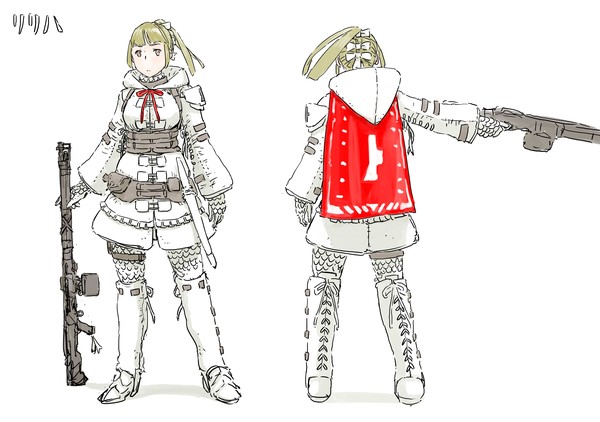
"Either way, this type of project would have taken a lot of time," Moriya says. "But yes, we could do all that because we had the time."
Moriya also stresses that Kaina was made possible because it had the writers from Sidonia and BLAME! – Sadayuki Murai and Tetsuya Yamada. "They had worked with Nihei and us many times before," Moriya says. "Together, with their help, we were able to create this world, so it was a kind of a team effort from the very beginning, which helped speed things along."
Kaina is set in a strange world, even by anime standards. Kaina himself lives in a village near the top of a world-covering canopy. "There are only about ten people in his village, and he's the only young person," Moriya says. "Everyone else is really old. So he has the difficult task of hunting down insects for food. The second main character, Liliha, is a princess. Her kingdom is at the base of a massive tree – the bases of these trees have different countries around them."
The countries are surrounded by snow, but not the snow we know. "It's a different type of snow," says Moriya. "It's big, elastic, and cannot turn into water. The people in various countries can gain water from the trees, but that water is slowly running out and drying up. Now there's a lack of water, and the nation of Valghia has started a war by invading other countries to steal their water. This is also a very difficult situation."

The world's trees extend all the way to the outer layer where Kaina lives, but the people at the top don't know there are people at the bottom and vice versa. "But Liliha has heard legends of some people living above the tree, and that's why she goes up to seek help and finds Kaina there," Moriya explains.
I ask Moriya to describe the main differences between the characters. "Kaina lives in a very small village, and there are no females – it's all men. So he's never met a female before, and he's living a very rough, simple life, going hunting for insects, eating, surviving… He doesn't know much about the world at all. On the other hand, Liliha is royalty, the king's daughter in a kingdom of thousands of people. She's totally different from Kaina."
In 2022, Polygon contributed a spectacularly colorful world to an episode of Netflix's anthology series Love, Death and Robots. The episode “The Very Pulse of the Machine" depicted a woman astronaut struggling across the Jovian moon of Io as its landscape becomes increasingly hallucinatory. I ask Moriya if he thinks Polygon has advanced in recent years in how it can show fantastical worlds.
"From back in 2014 with the first season of Sidonia," Moriya says, "we've been developing the cel-looking animated style, and even before that with Tron: Uprising. Since then, we've worked on Transformers, Star Wars, and all these different types of big projects, where we've been trying to develop different styles and abilities. We've tried to match a specific style with a specific technique; we have a bunch of different techniques we can pull from."
Moriya says that Kaina's creators didn't have the Love, Death and Robots episode in mind. "But it's just that we have so many different techniques that we can pull from now. Both Kaina and the Love, Death and Robots episode are using our newest technology, and we probably have the most experience with cel-looking animation because we've done so much of it, so that's probably why it might feel similar."
The world in Kaina may also remind some viewers of older fantasy worlds; for example, those in the comics of Moebius or Hayao Miyazaki's Nausicaa. "I've never actually read Moebius comics," says Moriya. "But for Miyazaki and Ghibli, with our age range, everyone has seen the Ghibli movies, so that must be an inspiration for something.

"At the same time," Moriya adds, "this story of a young boy from the countryside who doesn't know anything about the world, who meets a very sophisticated female, a Princess… It's a story that you see a lot in different works. What we tried to do with this one was to pull from different projects we've seen before and try to put them together and make something new and better. For myself, Nihei, Murai, and Yamada, we really like Ghibli, we respect what they've done, but at the same time, we're trying to be as original as possible. Of course, there might be some similar things because we're fans of those works too."
I suggest that Kaina's position at the story's beginning isn't so different from that of the infant Son Goku in the first Dragon Ball story, who doesn't know anything about civilization or females. "Really?" Moriya laughs. "We didn't think of that at all when we did this, but it's interesting to hear you say that. And possibly unconsciously, we might be influenced by those works we've seen before."
Snow and whiteness are major visual elements in Kaina, more than in any other Polygon anime to date. "The main issue was that there was a lot of white elements with the snow and the clouds," says Moriya. "Sometimes, in the background, you can't see the border; where does one end? Where does one begin? So we had to make color adjustments for many of the shots to make it easier to see and separate those two. Especially in night scenes, when you don't really know what you're looking at. That was really difficult, but we've already completed the color corrections for all 11 episodes and have wrapped up the series."

Polygon is already in production on a theatrical Kaina film, which will be a sequel to the show. In Japan, the series is being screened on +Ultra, which Fuji TV described as a platform for anime aimed at a global audience. For my last question, I asked Moriya if he thinks of the series as being made for such a global audience.
"There are two things. The first is that the anime itself does not show daily Japanese life; it's a fantastical world that could be accepted worldwide. That's one thing that we're hoping for. The second thing is that Nihei is already popular in North America, Europe, and Brazil. He has a lot of fans of his previous works, and they're probably looking forward to his new work, and we want to make them happy as well."
Disclosure: Andrew Osmond previously contributed to text for the art book The Art of Pacific Rim: The Black (2022).
discuss this in the forum (1 post) |